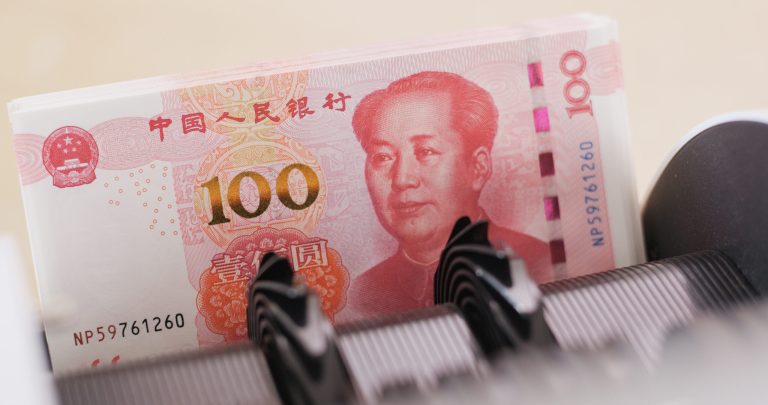China’s central bank, the People’s Bank of China (PBOC), has announced the expansion of its monetary policy tools by introducing an outright reverse repurchase agreements (repos) facility.
This monthly tool will allow banks and non-bank institutions to borrow against sovereign, local government, and corporate bonds, with agreements set to last for no more than a year.
The introduction of outright reverse repurchase agreements (repos) with primary dealers marks the latest effort by the central bank to fine-tune its influence over market borrowing costs and inject stability into China’s banking sector.
The facility starts on Monday.
The PBOC’s goal is to ensure a reasonable level of liquidity in the financial system, helping to cushion against seasonal spikes in cash demand, especially as the year-end approaches.
Easing liquidity pressure amid bond issuance surge
China is expected to ramp up government bond issuance to finance additional spending and refinance local government debt, raising concerns about potential liquidity pressures in the interbank market.
The new tool, which allows for longer-term liquidity injections, is well-timed to help absorb the market impact of this expected surge in bond supply.
“Outright repo has an underlying exchange of bonds, allowing banks to free up longer-term liquidity,” Becky Liu, head of China macro strategy at Standard Chartered Bank said in a Bloomberg report.
This will help the PBOC prepare banks for an anticipated rise in government bond issuance.
As commercial banks are the primary buyers of these bonds, the outright reverse repo tool will help ensure sufficient liquidity, even as more bonds are sold to finance stimulus measures.
Market observers see this development as part of the PBOC’s broader shift toward a more sophisticated and market-driven monetary policy framework.
China’s benchmark yields showed little reaction to the news, though the offshore yuan weakened slightly against the dollar.
Outright reverse repo: aligning with global central banks
The introduction of outright reverse repos is part of a broader revamp of the PBOC’s approach to managing liquidity.
The central bank has been moving away from relying on the medium-term lending facility (MLF) as a primary rate-setting tool, instead favoring shorter-term instruments like the seven-day reverse repo to provide clearer signals to the market.
This shift positions the PBOC closer to the practices of its global counterparts, enabling more precise control over market borrowing costs and liquidity conditions.
The new outright repo tool is expected to sit somewhere between the shorter-term seven-day reverse repo and the longer-term MLF, offering a medium-term liquidity solution.
By offering 3- to 6-month outright repo agreements, the PBOC aims to provide more flexibility in its operations while alleviating funding stress in the banking sector, which faces significant MLF maturities in the final months of 2024.
According to Bloomberg, China has about 1.45 trillion yuan ($204 billion) of MLF loans maturing in November and December, making the timing of this tool critical for market stability.
New tool to help banks manage cash needs
China’s financial institutions are preparing for what could be a particularly tight year-end, with seasonal cash demand likely to rise.
In addition, uncertainty remains over the potential for further fiscal stimulus, which may come in the form of additional government borrowing and bond issuance.
Ensuring adequate liquidity in the market is essential to maintaining economic momentum, particularly as China continues to struggle with weak domestic demand and an ongoing property sector crisis.
Policymakers have already introduced a broad stimulus package, including cuts to interest rates and reductions in banks’ reserve requirements.
These measures aim to support a recovery in economic activity, but liquidity constraints remain a concern.
Money market indicators have been flashing warning signs that some institutions are already underfunding stress.
The new repo tool is expected to ease this pressure by ensuring that banks can access liquidity to meet their needs while freeing up cash for bond purchases.
While the outright reverse repo tool will likely reduce the pressure on banks, its introduction could also signal a lower likelihood of further cuts to the reserve requirement ratio (RRR) in the near term.
Frances Cheung, a strategist at Oversea-Chinese Banking Corp, noted that the flexibility provided by outright reverse repos makes it less necessary for the PBOC to rely on other policy tools, such as RRR cuts, to manage liquidity.
The post PBOC broadens monetary toolkit with outright reverse repo appeared first on Invezz

